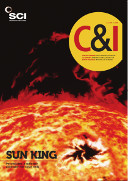The mysteries of a largely silent majority of DNA code in our genomes are being deciphered using the latest gene editing technology.
Non-coding DNA, once dubbed ‘junk’ DNA, makes up 90% of the human genome and does not code for protein. US scientists have now used CRISPR/Cas9 gene editing techniques to mutate non-coding DNA and study the consequences (Science, doi: 10.1126/science.aaf7613). They used around 18,000 RNA probes to target within 700,000 DNA bases around three specific genes relevant to drug resistance in melanoma.
The guide RNAs probed the role of non-coding regions of DNA in resistance to cancer drug vemurafenib. The expression of one key gene (CUL3) was drastically reduced after a specific guide RNA caused mutations in surrounding non-coding regions.
‘One practical benefit would be [to use] these studies to predict mechanisms whereby the tumours of patients may become resistant to vemurafenib by turning off genes,’ notes geneticist Daniel Bauer at the Harvard Stem Cell Institute and Boston’s Children Hospital, US, who was not involved in the study. Future studies may ‘identify novel strategies to overcome resistance,’ he added.
The study authors, at the Broad Institute in Massachusetts, US, say the technique can now be used to identify non-coding DNA regions linked to a loss of gene expression and disease-relevant conditions.
‘The CRISPR/Cas9 technique was critical because you could make a large number of mutational changes in a cell population very quickly and then use that large number of variations to ask important questions,’ says Phil Sharp, molecular biologist at MIT who won the 2003 Nobel prize for discovering RNA splicing. ‘It contributes to our knowledge of [BRAF inhibitor resistance in melanoma] and its treatment and helps answer another more general question – why are all these non-coding sequences out there and do they really have a function. This clearly demonstrates that they do.’
Another paper in the same issue of Science, meanwhile, used CRISPR interference to investigate non-coding regions (doi: 10.1126/science.aag2445) around genes controlling the proliferation of leukemia cells. Bauer describes this as ‘epigenome editing’, because it did not edit the DNA sequences but instead biochemically modified the proteins within which DNA is packed. These indirect disturbances of the non-coding DNA revealed control regions for genes.





